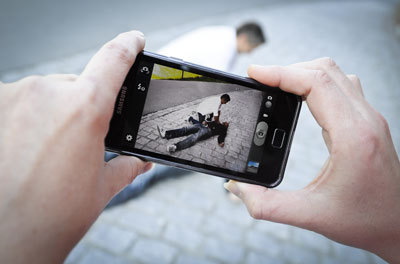Supporting lay bystanders during out-of-hospital cardiac arrest

Medical emergencies require rapid, effective and good communication. The public has increasing possibilities for video conferencing over regular cell phones. Can lay people in the future get better help from emergency medical dispatch centers if they can transmit live images from medical emergencies via cell phones? This is the main question in this doctoral thesis conducted at the Norwegian Centre for Integrated Care and Telemedicine and Division of Trauma Care and Pre-Hospital Services at the University Hospital of North Norway, Tromsø, Norway.
180 high schools students from Tromsø participated in simulated cardiac arrest. During the tests the students communicated with dispatcher nurses. The communication took place using two types of mobile phones: regular phones with just voice, or telephones with voice and two-way video transmission. A resuscitation manikin was used to measure duration and quality of resuscitation in a randomized controlled trial. After the effort, participants were interviewed or answered a questionnaire.
A risk analysis was performed for the information security of video dispatch. According to the dispatchers, videoconferencing improved the quality of communication, and supervision became easier when they could see both the "patient" and resuscitation attempts. The dispatchers thought videoconferencing can provide increased confidence, time savings and better treatment. The quality of the video conference was not sufficient in these trials to provide clear differences in resuscitation quality, but lay people felt more safe when they had visual contact with the dispatchers.
The risk analysis of this technology revealed no unacceptable risks to information security. Video enabled mobile phones and improved communication technology may provide better quality of communication and resuscitation in medical emergencies. Actual events must be studied to determine how visual communication best can be utilized in emergency medical situations.